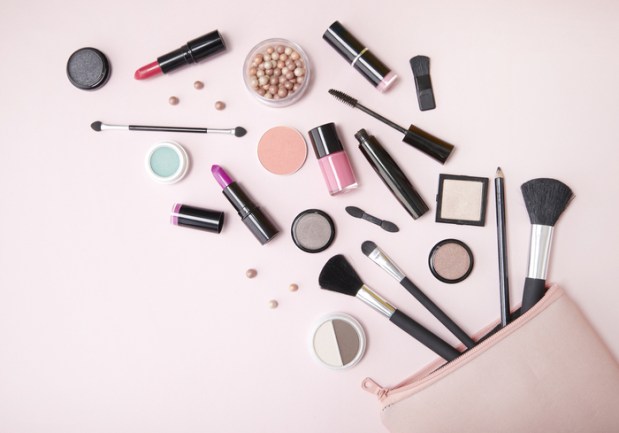Digital Spaces As Virtual Makeup Studios, Augmented Reality Style

To help improve the retail shopping and shipping experience, virtual reality (VR) and augmented reality (AR) is catching on with big-box retailers in the U.S. AR could be on the cusp of having its moment, as a large brick-and-mortar retailer has fresh plans to appeal to shoppers willing to test out the technology.
Target, for instance, is bringing in augmented reality (AR) to develop its Target Beauty Studio. Through a collaborative project with Perfect Corp.’s YouCam Makeup app, customers will be able to “try on” different shades of makeup using a digital screen before they make a purchase.
Retailers from H&M to Zara are also getting onboard with VR and AR, as the market is poised to grow to be worth billions with consumers willing to exploring virtual worlds through their devices.
According to the PYMNTS Digital Consumer Report, new technology has made it possible for merchants to transmit physical reality into the digital world – and bridge the gap between brick-and-mortar retail and eCommerce. Here is how the market is projected to grow and how retailers are introducing the technology to their customers:
A little more than half – or 53 percent – of consumers say they are interested in using augmented reality within the next six months. And new technology is in the works to help welcome them to the AR world: In October, it was reported that a Facebook executive said the company is developing augmented reality glasses. According to reports, Facebook’s Head of Augmented Reality Ficus Kirkpatrick said at an AR/VR event in Los Angeles, “We want to see those AR glasses come into reality, and I think we want to play our part in helping to bring them there.” Releasing AR headsets would put the social media giant in direct competition with AR startups like Magic Leap and Thalmic Labs. In addition, Microsoft has already released its HoloLens product, while Google Glass is still in development and Apple has acquired AR hardware developers Akonia Holographics and Vrvana to work on its own headsets.
In 2017, the global AR market was valued at $1.43 billion, and brands are already getting onboard with the technology. L’Oréal, for instance, is teaming up with Facebook to conduct virtual tests using augmented reality, which will allow customers to see how they look with different makeup, such as eye shadow or lipstick colors. L’Oréal, the world’s largest cosmetics group, in March acquired ModiFace, a Canadian firm that specializes in augmented reality and artificial intelligence. Under its new partnership with Facebook, the augmented reality tests will be used on the L’Oréal platform beginning with NYX, as well as Urban Decay, Lancôme and Yves Saint Laurent. Customers will be able to try everything from foundation shades to eyebrow shapes, according to the report.
By some estimates, the global AR market is set to reach $12.97 billion by 2023, and companies are investing in the technology. Lyft, the ride-hailing startup that is expected to launch an initial public offering (IPO) next year, had reportedly acquired Blue Vision Labs, the London-based AR startup. And a media outlet reported in October that Lyft will also unveil its first self-driving test vehicle with Ford, which will be the Ford Fusion Hybrid. The two companies have been in a partnership for about a year, and the first Ford car to come from Lyft’s self-driving project is a culmination of that. According to the report, Blue Vision will be part of Lyft’s Level 5 self-driving car unit led by Luc Vincent, and the company and its staff of 39 will become the anchor for a new R&D lab in London. Blue Vision has created technology including street-level mapping and interactive AR that enables two people to see the same virtual objects.
Ralph Lauren installed 16 smart mirrors in the fitting rooms at its flagship location on Fifth Avenue in 2015. Then, in June, it was reported that H&M is rolling out a voice-activated mirror in a flagship New York City location. The device offers style recommendations, selfies and a route to eCommerce. Microsoft, Ombori and Visual Art worked to create the device, which “sleeps” until facial detection technology turns it on. The device then asks the person to take a selfie, which appears on the screen in the style of a magazine cover. The user can then download the image by using their smartphone to scan an on-screen QR code. The idea is to use the technology to create a relationship. Ombori Founder and CEO Andreas Hassellöf told Forbes, “The formula is based on creating surprise, satisfaction of experience and then making a conversion.”
Zara combined AR and social media when it introduced augmented reality displays to 120 of its brick-and mortar stores worldwide in April. In an effort to attract millennials, Zara planned to integrate augmented reality into its store, it was reported in March. The retailer will bring the technology to 120 of its locations around the world, Reuters reported. With the technology, Zara will be able to show models wearing the latest fashions to customers when they put their mobile devices near a sensor within its brick-and-mortar stores or near certain shop windows. If customers like the clothing on display, they can purchase the looks through their mobile devices. The owner of Zara, Inditex, is famous for rushing looks from fashion shows to its stores within days.
As efforts from retailers such as Target, Zara and H&M suggest, the number of merchants investing in AR technology continues to swell. And the next iterations might not contain images onto a screen: With “spatial computing,” these images could be superimposed into spaces in the real world, too.
